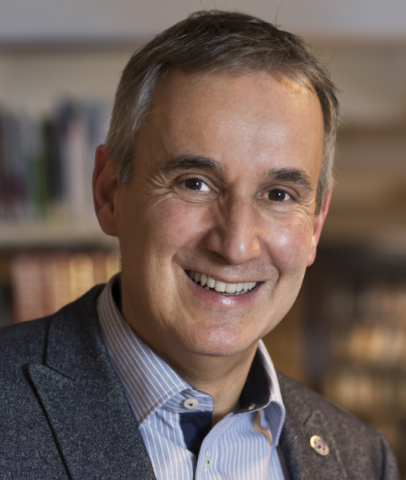Diversity is a catalyst for creativity at CERN. Including everyone and ensuring equal opportunities for all is one of the Organization’s main principles. However, inclusivity requires accessibility. If a site, building, form of communication or knowledge-sharing medium excludes even a tiny minority of people, we cannot claim to be truly diverse.
Global Accessibility Awareness Day, which will take place on 16 May, offers a reminder that, if we don’t want to leave anyone out in the cold, accessibility for all – and particularly for those with disabilities – is an absolute necessity. CERN is committed to promoting inclusivity and accessibility and has many teams working on this. The Diversity Office supports and keeps track of initiatives in this area.
The Human Resources department, along with its Social Affairs service and the Occupational Health Service, has long been implementing measures to help people with disabilities to integrate at CERN. When necessary, a working group comprising all the relevant parties meets to adapt the working environment to the person in question. An informal network is also in place to help our colleagues with disabilities with practical questions.
But ensuring equal opportunities sometimes requires a helping hand. Statistics show, for example, that the unemployment rate among people of working age is higher for people with disabilities. Since 2018, the Human Resources department has offered an internship reserved specifically for science and technology students with disabilities. The initiative, which is open only to students from CERN’s two Host States for now, has been recognised by the European Physical Society (EPS), which has awarded it a grant.
Accessibility is also a question of mobility and building design. The GIS portal shows all the areas that are accessible to wheelchair users, and new building and development projects take accessibility into account.
The International Relations sector is also working on improving access to guided tours, exhibitions and the website. A diversity working group within the IR sector supports initiatives in this area. The reception area and conference room in Building 33 and the first few rows of seating in the Globe have recently been equipped with an audio induction loop for people with a hearing impairment. At a public lecture this week, the local communication team offered an on-request sign language interpretation service for the first time; this will also be available at future events. In December, the exhibitions team held a joint workshop for people with visual impairments and tour guides, with a view to making CERN’s exhibitions more accessible. Tactile and audio content was developed as a result. Web accessibility has also been improved: the new public website has better colour contrast and descriptive texts for images.
A collaboration between the World Intellectual Property Organization (WIPO) and three CERN teams (IT, the Translation service and the Diversity Office) has been launched to develop a speech-to-text transcription system. If the project is successful, subtitles will be added to lecture recordings, making them accessible to people with a hearing impairment.
Initiatives abound and the sharing of experience and information is bearing fruit. Sometimes, a simple action or minor adjustment is all that’s needed to improve the daily lives of our colleagues and visitors with disabilities.

